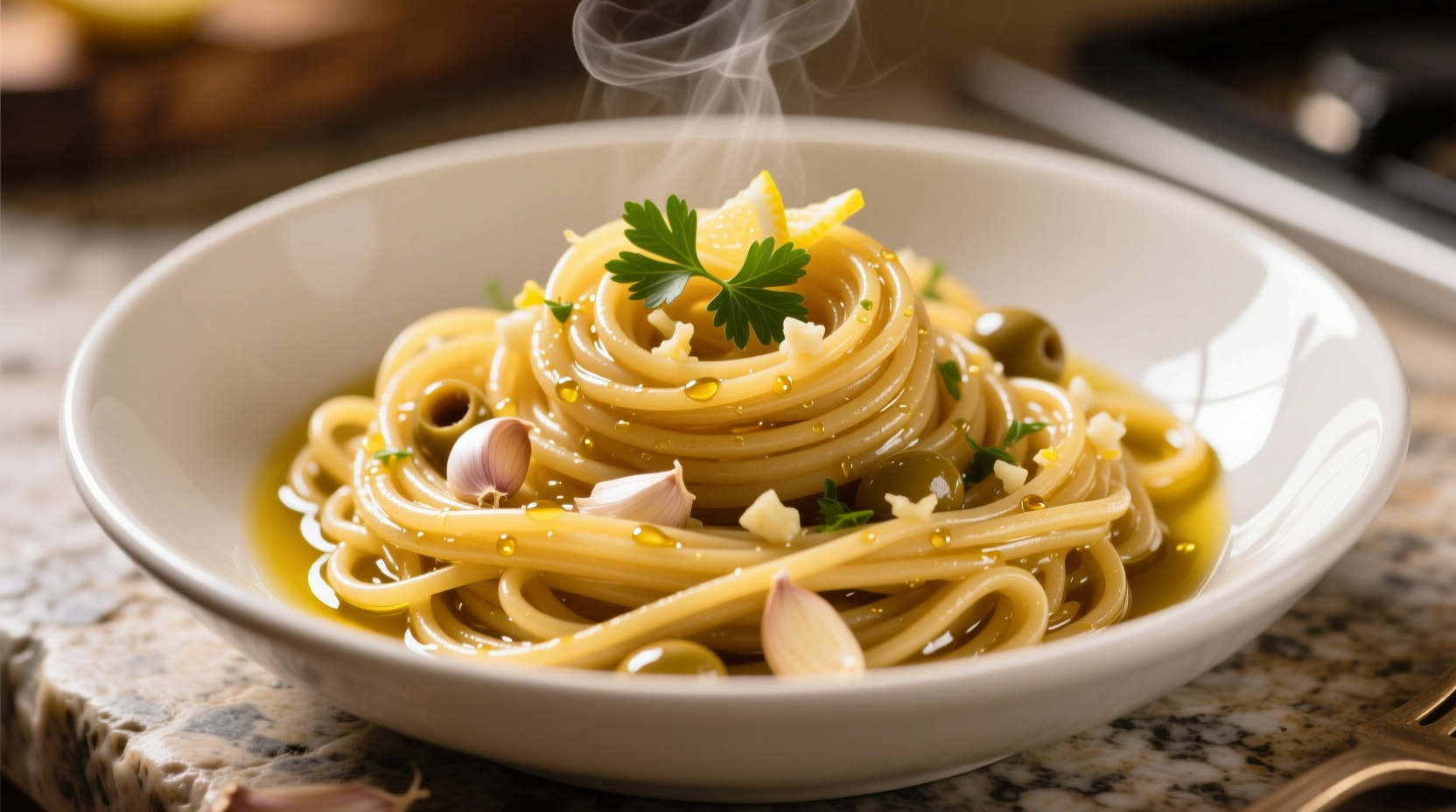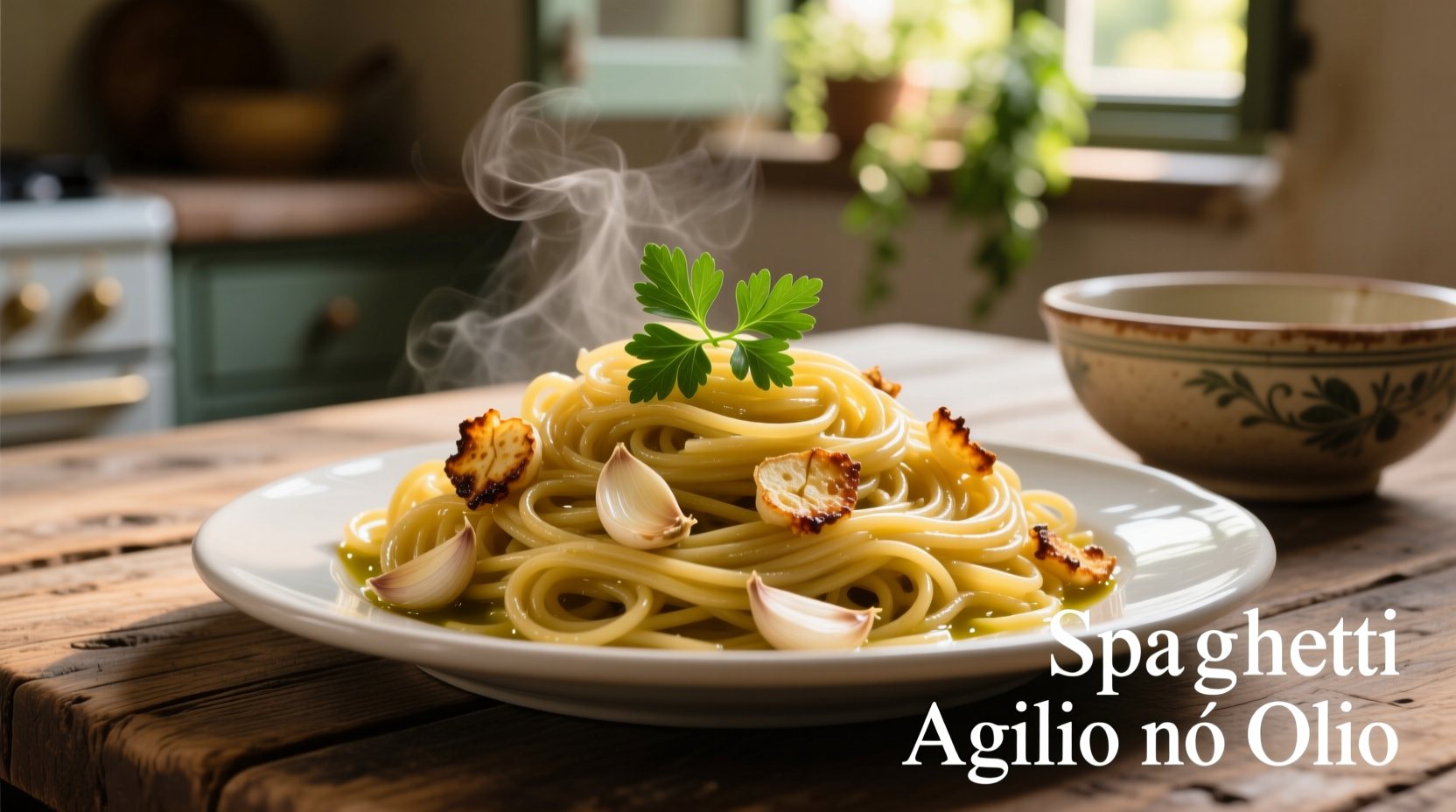The Essential Spaghetti Aglio e Olio Recipe
When executed with attention to detail, this minimalist Italian staple transforms humble ingredients into a restaurant-quality meal. Unlike complicated pasta dishes, Spaghetti Aglio e Olio's magic lies in its simplicity and technique—the perfect balance of golden garlic, emulsified oil, and starchy pasta water creates a sauce that clings to every strand.

Why This Recipe Works
Most home cooks fail with Spaghetti Aglio e Olio by burning the garlic or creating a greasy sauce. The secret? Temperature control and emulsion science. As food scientist Harold McGee explains in On Food and Cooking, "The starch in pasta water acts as an emulsifier, binding oil and water to create a creamy texture without dairy." This explains why proper technique yields a velvety sauce rather than separated oil.
| Traditional Method | Common Mistakes |
|---|---|
| Garlic gently infused in oil (160-180°F) | Garlic fried until brown (bitter flavor) |
| 1:2 ratio of pasta to starchy water | Draining pasta completely |
| Finished cooking in pan with pasta water | Tossing pre-cooked pasta with sauce |
| Fresh parsley added off-heat | Parsley cooked with garlic (muddy flavor) |
Mastering the Technique: Step-by-Step
Ingredient Selection Matters
For authentic results, choose high-quality extra virgin olive oil with peppery notes (like Tuscan or Sicilian varieties). The International Olive Council confirms that premium EVOO contains polyphenols that enhance flavor complexity. Avoid "light" olive oils—they lack the aromatic compounds essential for this dish.
The Critical Cooking Process
- Perfect pasta water: Use 4 quarts water per pound of pasta with 2 tablespoons salt (seawater salinity)
- Garlic infusion: Heat oil over medium-low, add thinly sliced garlic until fragrant (3-4 minutes)—never golden
- Strategic transfer: Move 1½ cups starchy water to bowl before draining pasta at 2 minutes under al dente
- Emulsion creation: Combine pasta and water in pan, cooking 2 minutes while vigorously tossing
- Final integration: Remove from heat, add oil-garlic mixture, red pepper flakes, and parsley
When This Dish Shines (and When to Choose Otherwise)
Spaghetti Aglio e Olio excels as a 20-minute weeknight solution when quality ingredients are available. However, food anthropologist Dr. Anna Del Conte notes in The Oxford Companion to Italian Food that this dish originated as "cucina povera" (peasant cooking) when tomatoes or cheese were unavailable. It's inappropriate for formal occasions requiring complex sauces, but perfect for:
- Hot summer nights (minimal cooking heat)
- Dairy-free or vegan requirements
- When pantry staples are limited
- Teaching fundamental pasta techniques
Professional Variations Worth Trying
While purists argue against additions, Naples' own Associazione Verace Pizza Napoletana recognizes these authentic variations:
Traditional Enhancements
- Aglio, Olio e Acciughe: 2-3 salted anchovies dissolved in oil (adds umami depth)
- Aglio, Olio e Alici: Fresh anchovy fillets (milder flavor)
- Aglio, Olio e Briciole: Toasted breadcrumbs for texture (Sicilian version)
Modern Interpretations
- Lemon zest added with parsley
- Grated bottarga (cured fish roe) as finishing touch
- Substituting half the spaghetti with linguine for better sauce adherence
Serving Like an Italian
In Naples, this dish is served immediately in warmed bowls with no additional cheese (the acidity clashes with garlic). Pair with:
- A crisp Greco di Tufo white wine
- Simple arugula salad with lemon vinaigrette
- Freshly baked crusty bread for mopping plates











 浙公网安备
33010002000092号
浙公网安备
33010002000092号 浙B2-20120091-4
浙B2-20120091-4